
FOREIGN AID TRANSFERS MONEY FROM POOR PEOPLE IN RICH COUNTRIES TO RICH PEOPLE IN POOR COUNTRIES
It goes without saying that most Americans do not trust the phrase “foreign aid” and would rather stop giving money away to “foreign countries” and give that same money to U. S. citizens who are in economic need. In 2016, Obama’s State Department and United States Agency for International Development (USAID) gave away over $50 billion dollars in “alleged” foreign aid. This does not take into account the tens of billions the U. S. federal government gives away yearly to the United Nations and its agencies that are supposed to be doing the same job that USAID claims it is doing.
These United Nations agencies, such as: the World Health Organization, UNESCO, UN Peacekeepers, the UN Refugee Agency, the World Trade Organization, the World Bank, the International Monetary Fund, and the many other U. N. agencies seem to be equally incapable of helping people in need as is the USAID. Lots of money gets spent, and the same problems continue unabated. It is disgraceful.
When you look at Hillary Clinton’s State Department “pay-to-play” schemes with foreign governments, you can see an added layer of overt corruption and cronyism between the source of U. S. foreign aid (U. S. State Department) and the recipients of the money.
THE AMERICAN INTELLIGENCE MEDIA DEMONSTRATES IN THE EVIDENCE PRESENTED BELOW, THAT ALL U. S. AID IS PAID TO U. S. CORPORATIONS AND INDIVIDUALS WHO ACT AS A CHANNEL FOR THE MONEY TO REACH THE “INTENDED” RECIPIENTS WHO ARE OSTENSIBLY IN GREAT NEED.
In fact, $50 billion a year is parceled out to the same old corporate cronies that it is always given to — Wells Fargo, Citibank, hedge funds, off-shore shell companies, etc. Then, other organizations, like the pseudo-government agency called the Overseas Private Investment Corporation (OPIC), add to the flow of money with huge loans guaranteed by the United States government. Therefore, the U. S. tax payer pays three times for the same alleged assistance going to some foreign country where few Americas ever go or may even have heard of.
ONLY AMERICAN CORPORATIONS, BANKS, INSURANCE COMPANIES, HEDGE FUNDS, PERSONAL INDIVIDUALS AND THE LIKE MAY RECEIVE U. S. FOREIGN AID – NOT FOREIGN GOVERNMENTS OR FOREIGNERS.
Therefore, USAID is not foreign aid and it is not aid at all, it is venture capital and investments in U. S. corporations and their agents.
It is also well-known that most of this “international development” money never reaches the intended goal. Often there is little or no compliance follow-through or reporting requirements. OPIC is the worst for this type of mismanagement.
Essentially, any “U. S. sponsor” can file for an OPIC loan and loan guarantee and if the U. S. bureaucracy – Senior Executive Service – says yes, then the applicant can basically count on OPIC funding the project for the entire length of the project, which is often ten years.
This report provides many OPIC funding examples that show the transparent corruption and obvious theft of OPIC funding through corporate cronyism and bureaucratic obfuscation and deceit. The use of off-shore tax havens or Delaware incorporations for many of the recipient U. S. sponsor companies reads like a cheap criminal novel.

In one OPIC contract in 2016, Noble Energy was given a $4.5 billion dollar loan to drill for oil in Israel so that foreign companies could benefit from the proceeds. Power plants in Jordan, Israel, and Ukraine are funded by OPIC so that there will be power supplied for oil companies to exploit and fleece foreign nations, often surrounded by hostilities requiring U. S. military presence to “support” the U.S. corporation.
OPIC also provides a huge amount of loans to banks to make smaller loans to other banks, themselves, or customers. OPIC simply gives money to banks and calls it foreign aid, or international development. These types of corrupt practices are only slightly hidden. The sleight of hand is passed off as a noble and humanitarian deed that should be unquestionable because it is based upon the theoretical premise of “helping” other nations.
It is also helpful to realize that U. S. State Department “aid” is usually in the form of weapon contracts with leading U. S. military contractors, the largest companies in the world, who also make weapons for our enemies.
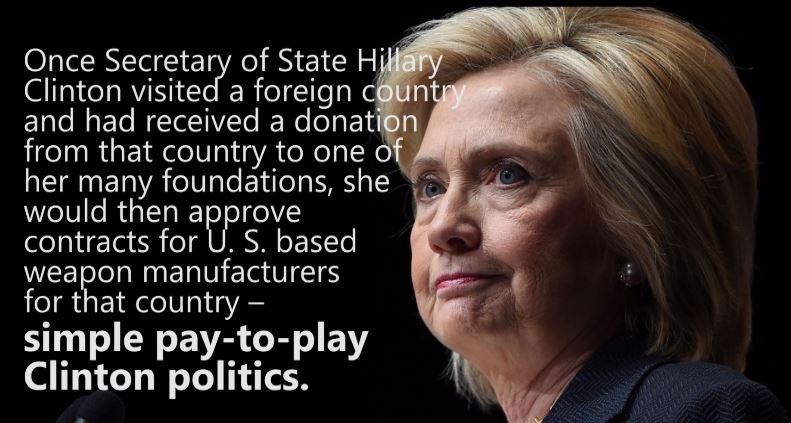
This is considered U. S. “foreign aid”, even though private multi-national military contractors benefit from the “aid” more than anyone else. In fact, the U. S. money is simply given to the corporation along with the weapons order made by the country being “given” this “aid.”
The big question then arises, “Who gets the $50 billion or so each year? Who determines who gets this money?”
Of course, one might imagine that the U. S. Congress or the White House or the Secretary of State might carefully review the national security and economic considerations of throwing $50 billion around the world in foreign aid. Actually, none of the above make the decisions. Senior Executive Service members in the State Department, U. S. Treasury, FBI, CIA, NSA, and many other federal agencies work together through the Senior Executive Association to set the standards for giving this money to the same channels they have been told to give it to for a long, long time. Bureaucratic status quo tendencies die hard, especially when the usual criminals are expecting their cut of the pie.
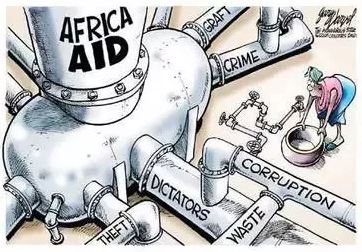
Take for example Crown Agents USA Inc. who pose as an humanitarian relief agency which has the capacity to “accomplish anything” that USAID or OPIC need done. They are a trusted British agency that goes back to the year 1711 and have been serving the British Crown ever since. Yes, British “agents” simply stand in line and get their share of the U. S. “foreign aid” pie and then take the money to Africa (in most cases) to help the very Africans who they already manipulate by owning the corporations that control African economics (banks, gas stations, media, etc.). In other words, USAID and OPIC give Crown Agents USA Inc. (actually owned by the British Crown) money and huge loans to enrich their personal “overseas” ventures.
THEY TAKE MONEY FOR HUMANITARIAN CAUSES AS IF THEY WERE A PHILANTHROPIC ORGANIZATION AND YET ARE SIMPLY WELL-ESTABLISHED CRIMINALS STEALING FROM THE POOR TO GIVE TO THE RICH.
This system of lies and deceit go back to the oldest institutions on the globe – the Vatican, the Vatican Bank, the Knights of Malta, the Venetian bankers of the crusades, the German spice-trading banker families, the Dutch and British East India Companies (corporations), and other economic terrorists who “traded with the sword.” The creation of corporations as the nemesis of nations has led us to nation-fleecing as third world countries are targeted for “foreign aid” but, in fact, become subjects of foreign resource manipulation and economic slavery.
HISTORY OF OPIC
Congress created OPIC (Overseas Private Investment Corporation) in 1969 through an amendment to the Foreign Assistance Act during Nixon’s Administration. It began in 1971, with a portfolio of $8.4 billion in political risk insurance and $169 million in loan guaranties.
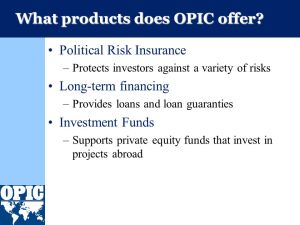
Organized as a corporation with a corporate structure, OPIC is governed by a Board of Directors, President and CEO, and Executive Vice President, all nominated by the President and approved by the Senate. The majority of the Board of Directors, including its President, are “drawn from private life and have business experience.” OPIC is appropriated administrative funding, and reauthorized on a regular basis, by the U.S. Congress.

OPIC is run by the Senior Executive Service at a cost of $88 million per year with another $20 million a year for other “expenses.” OPIC “claims” to be both private and an agency “paid for” by the U. S. government.
You really can’t have both, but it comes in handy when you want to hide the “private” books of the “corporation” that is paid for by Americans and claims to be “self-funding.”
OPIC is the U. S. government’s development finance institution that claims to advance the foreign policy of the United States and its national security objectives but actually provides monetary support of U. S. corporations. OPIC claims to work with the U.S. private sector to help businesses gain footholds in foreign markets. OPIC claims to create revenue, jobs and growth opportunities principally at home and secondarily abroad.
It provides U. S. investors with financing, political risk insurance, and support for private equity investment funds. OPIC costs Americans $108 million to operate per year and expands U. S. business enterprises in more than 160 countries offering political risk insurance to cover civil strife and business interruption.
OPIC maintains a portfolio of more than $20 billion, which has doubled over this past decade. This portfolio spans more than 160 developing countries. Other highlights include:
- Since 1974, OPIC has committed over $11.7 billion in support of 537 projects in Sub-Saharan Africa.
- Since 1974, OPIC has committed more than $1.9 billion for 131 projects in Pakistan.
- Since 1974, OPIC has committed more than $10.1 billion in support of 505 projects in the MENA region.
- OPIC’s portfolio in the Middle East and North Africa currently totals $3.4 billion across 66 projects.
- Since 2004, OPIC has committed nearly $629 million in 32 projects in Iraq, the Middle East and North Africa.
- Approximately $6.9 billion of OPIC’s current $20 billion portfolio is in post-conflict nations.
- Priority countries for OPIC include: Afghanistan, Iraq, Jordan, Egypt, Ukraine, Georgia, Tunisia, and the West Bank.
- OPIC pledged $2 billion in financial support for private investment in the Middle East and North Africa and an additional $1 billion specifically for Egypt.
- OPIC’s approved $500 million to support lending through local banks in Egypt and Jordan to small businesses with more than $1.9 billion in financing, guarantees, and insurance.
OPIC AND USAID
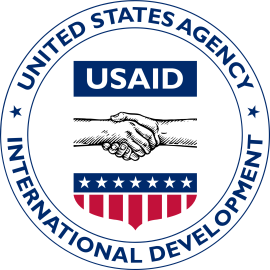
The United States Agency for International Development (USAID) is an independent agency of the United States federal government that is primarily responsible for administering civilian foreign aid and development assistance. With a budget of over $27 billion, USAID is one of the largest official aid agencies in the world, and accounts for more than half of all U.S. foreign aid and assistance.
Congress passed the Foreign Assistance Act on September 4, 1961, which reorganized U.S. foreign assistance programs and mandated the creation of an agency to administer economic aid. USAID was subsequently established by the executive order of President John F. Kennedy, who sought to unite several existing foreign assistance organizations and programs under one agency. USAID became the first U.S. foreign assistance organization whose primary focus was long-term socioeconomic development.
USAID’s programs are authorized by Congress in the Foreign Assistance Act, which Congress supplements through directions in annual funding appropriation acts and other legislation. To support U.S. geopolitical interests, Congress appropriates exceptional financial assistance to allies, largely in the form of “Economic Support Funds” (ESF). USAID is called on to administer the bulk (90%) of ESF.
Also, when U.S. troops are in the field, USAID can supplement the “Civil Affairs” programs that the U. S. military conducts to win the friendship of local populations. In these circumstances, USAID may be directed by specially appointed diplomatic officials of the State Department, as has been done in Afghanistan and Pakistan during operations against al-Qaeda.
OPIC Collaboration with Other Federal Agencies from USAID’s broad spectrum of financial services to the private sector help pave the way for later stage OPIC support. OPIC’s tools build on and amplify USAID investments. OPIC and USAID staff meet every quarter to share information about projects and decide how to refer projects to one another, allocate or share investment risks.
2016 OPIC FUNDING CONTRACTS
Let’s look at the 2016 loans and guarantees given out by the Overseas Private Investment Corporation (OPIC) to examine the patterns of corruption and circular logic that underpins most of these allocations. We see the regular pattern that banks are giving money to other banks or to cover new banking programs within their own banks. Huge amounts of money go for future “small loans” to bank customers or low-income loans. The code words that sound “humanitarian” are used but are simply a ruse, like: financing, leasing, micro financed loans, and many other types of financial instruments that are internal banking operations that are not subject to detail reporting.
BANK MANEUVERS
Banco Davivienda S.A. – Loan will be used to lend to low-income home buyers throughout Colombia. $324 million – U.S. Sponsor: Wells Fargo Bank, N. A.
Yes Bank Limited – Will make loans to small and medium enterprises throughout India. $200 million – U.S. Sponsor: Wells Fargo Bank N. A.
Banco BAC San José, S.A. – Will stimulate the local economy of Costa Rica by providing access to finance and leasing for small and medium-sized enterprises. $86 million – U. S. Sponsor: Wells Fargo Bank, N. A.
Andrew and Williamson – Refinancing of Wells Fargo loan involving a farm in Mexico. OPIC Guaranty Amount: $3.441,666.80 Total Project Cost: $20 million – Wells Fargo Bank N . A.
Greenland Fedha Limited – Microfinance loans. $12 million – U.S. Sponsor: Citibank N. A.
Financiera Compartamos (Peru) – Microfinance loans. $15 million – U.S. Sponsor: Citibank N. A.
LOLC MicroCredit Limited – Microfinance loans in Sri Lanka. $5 million – U.S. Sponsor: Citibank
MicroCred Senegal – Microfinance loans. $2 million – U.S. Sponsor: Citibank N. A.
Accion Microfinance Bank – Microfinance loans in Nigeria. $1.6 – U.S. Sponsor: Citibank, N. A.
Isik Tarim (Turkey) – Manufacturing, packing and exporting organic dried fruits and nuts. $5 million – U. S. Sponsor: Citibank, N. A.
Unreasonable Capital Fund I, L.P. Sponsor – Loans to Unreasonable Capital Fund I LP to expand their portfolio of investments in small and medium enterprises in Sub-Saharan Africa, Southeast Asia and Latin America. $15 million
Financiera Fama, S.A. – Expansion of Borrower’s commercial lending business to capitalize on significant unmet demand among micro, small and medium companies in Nicaragua. $7.7 million
M. Suresh Botswana Ltd. – A revolving working capital loan for the expansion of a Botswana-based diamond cutting and polishing business. $15 million – Botswana Finance LLC
Commercial International Bank (Egypt) – Will guaranty local currency loans by the Lenders to small and medium enterprises, microfinance institutions, non-banking financial institutions and other approved borrowers. $70 million
Sociedad Financiera Equipate, S.A. de C.V. – Expansion of Equipa-T’s micro lending business to capitalize on significant unmet demand among low income entrepreneurs in Mexico. $10 million
Capital Bank of Jordan – Guaranty authority to a participating bank in the Jordan Loan Guaranty Facility. $20 million – Global Communities
PJSC Agroprosperis Bank (Ukraine) – Expand working capital financing and other similar lending to farmers in Ukraine. $23.7 million – U.S. Sponsor: NCH Agribusiness Partner II
PJSC Bank Vostok (Ukraine) – Expansion of lending portfolio. $8 million – U.S. Sponsor: Financial Services Volunteer Corps
LEDFC – A non-bank financial institution focused on SME lending in Liberia. $36 million – U.S. Sponsor: Mrs. Yvonne Nduom and Dr. Papa Kwesi Nduom
Schulze Global Mongolia Debt Facility – Providing senior secured loans to small and medium size enterprises in Mongolia. $11 million – U.S. Sponsor: Gabriel Schulze
Acord Capital SAS (Colombia) and Acord Capital SRL (Dominican Republic)– To support the development of its equipment leasing operation in Colombia and the Dominican Republic. $8.5 million – U.S. Sponsor: IDICO
Colombia – Colombian real-estate focused investment fund. $250 million
Golomt Bank LLC – Expansion of the bank’s lending portfolio in Mongolia. $15.4 million
LOLC Micro Credit Limited – Expansion of LOMC’s micro loan and lease portfolio in Sri Lanka. $15.4 million
Ndugutu Power Company Uganda Limited – Will provide a loan to support KMRI LLC, a U.S. small business, to develop, construct and operate a run-of-river hydro power plant in western Uganda. $16.6 million
Trau Bros. (Pty) Ltd. – A revolving working capital loan for the expansion of a Botswana-based diamond cutting and polishing business. $8 million – U.S. Sponsor: Botswana Finance LLC
Eurostar Botswana Ltd. – A revolving working capital loan for the expansion of a Botswana-based diamond cutting and polishing business. $30 million – U.S. Sponsor: Botswana Finance LLC
KGK Diamonds – A revolving working capital loan for the expansion of a Botswana-based diamond cutting and polishing business. $15 million – U.S. Sponsor: Botswana Finance LLC
Blue Star Diamonds Ltd. – A revolving working capital loan for the expansion of a Botswana-based diamond cutting and polishing business. $20 million – U.S. Sponsor: Botswana Finance LLC
LOLC Plc. – Will support the expansion of LOLC’s home improvement loan portfolios in Cambodia. $59 million – U.S. Sponsor: DWM Asset Management, LLC.
Federación de Cajas de Crédito y de Bancos de los Trabajadores, S.C. de R.L. de C.V – Loan proceeds and the borrower’s investment will be disbursed to finance Fedecredito’s loans to its member entities in El Salvador. $15.4 million – U.S. Sponsor: Financial Services Volunteer Corps
FATEN (Palestine for Credit and Development) – Loan guaranty support for SMEs operating in the Palestinian territories. $151.2 million – U.S. Sponsor: Middle East Investment Initiative
Early Dawn Microfinance Company Ltd. – Will lend to DAWN, a microfinance institution in Myanmar. $13.5 million – U.S. Sponsor: Accion Gateway Fund, LLC
XacBank LLC Project Description – Will support on-lending to women-owned SMEs in Mongolia. $78.6 million – U.S. Sponsor: Cargill Financial Services Incorporated
MFX Solutions, Inc. – Increase investment guaranty to MFX Solutions, Inc., a U.S.-based organization that offers currency hedging services. $224 million – U.S. Sponsor: MFX Solutions, LLC
Apis Growth Fund II, L.P. – The Fund will invest in a diversified portfolio of growth-stage companies that aim to provide financial services in selected growth markets across Africa and South Asia. $400 million
Helios Credit Partners, L.P. – The Fund will seek to provide senior secured and second-lien loans to companies in Sub-Saharan Africa that require capital for growth, acquisitions or capital expenditures. $300 million – U.S. Sponsor: Helios Investment Partners LLP
Acrecent México, S.A.P.I de C.V. – Will serve as an important lender for a small business in Mexico where similar long-term capital is not readily available. $17 million – U.S. Sponsor: Acrecent Financial Corporation
Siempre Creciendo, S.A. de C.V. – The Project is the expansion of Creciendo’s lending business to capitalize on significant unmet demand among low income entrepreneurs in Mexico. $10.3 million
Financiera Desyfin S.A. – Expansion of Borrower’s loans and leasing activities to Costa Rican SMEs. $10.3 million
OIL AND GAS
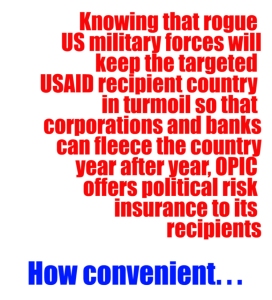
The level of corruption found in the oil and gas “investments” of OPIC are blatantly insider deals that enrich foreign government’s nationalized oil industry as well as foreign corporations What could possibly justify such investments that do not even compile with the overt advancement of U. S. corporations. When it comes to oil and gas, political maneuvering is seen on both sides of the crooked deal.
In the cases listed below, you will see that no U. S. sponsor is even required. The money goes directly to companies that are connected to nationalized industries. One might ask, “Why are U. S. tax dollars going into the pockets of oil barons?”
Contracts
Noble Energy International Limited – The project is the development of the Israeli offshore Leviathan gas field. $4.5 billion
ERU Corporation Foreign Enterprise – The expansion of a gas trading business by ERU Trading in Ukraine. $70 million
Naftogaz Gas Sale and Repurchase Facility – Will sell gas to a special purpose vehicle during the summer in Ukraine and will use the proceeds of such sale for liquidity. $500 million – U. S. Sponsor: Goldman Sachs International
Amandi Energy Limited – Development, construction, and operation of a Combined Cycle Gas Turbine power plant in Aboadze, Ghana. $542 million – Rand Merchant Bank and Nedbank (Mauritius)
.
OFFSHORE OR TAX HAVEN
Any time you see the names Mauritius, Panama, Delaware, or the Cayman Islands you are probably dealing with an illegal off-shore account or a spurious tax haven corporation that is less than ethical, if not completely illegal. Setting up shell companies in the Caymans is standard operating procedure for the recipients of OPIC and USAID funding.
From the outset, the dummy U. S. sponsor company that funnels the money into untraceable tax havens is indicating its intent to conduct a shady business deal involving corruption, money-laundering, tax evasion, and general theft as part of the business plan.
Contracts
Somerset Indus Healthcare Fund II (Mauritius) – Will seek to invest in products and services platforms that provide access to healthcare as well as help to increase access to healthcare outside the major urban population centers in India. $25,000,000
Scotiabank de Costa Rica, S.A. – The proceeds of the loan will be used to expand the Bank’s small and medium-sized enterprises loan portfolio in Costa Rica. $15 million
Banco Delta, S.A. – Expansion of a housing finance program marketed to non-salaried micro-entrepreneurs and small business owners in Panama. $41.5 million
African Local Currency Bond Fund (Mauritius) – Will facilitate local currency bond issuances for institutions. $40 million – U. S. Sponsor: Calvert Social Investment Foundation
WRB Serra Partners Fund I, L.P. (Delaware) – Will provide equity investments to infrastructure assets and related financing and other service companies in renewable energy, electric/water utilities and energy efficiency sectors in the Caribbean, Mexico, South America and Central America. $14 million
WaterCredit Investment Fund 3, LLC (Delaware) – Will aggregate and deploy $50 million in social investment capital to microfinance institutions to scale up their water and sanitation lending portfolios. $20 million
BRAC Africa Microfinance Ltd. (Cayman Islands) – To expand its portfolio of micro-loans serving mainly female clients in urban and rural areas in Myanmar. $6.7 – U.S. Sponsor: BRAC USA
Phatisa Food Fund 2 L.L.C. (Mauritius) – Will make growth equity investments in food and agriculture-related companies in Sub-Saharan Africa. $300 million
Sanergy, Inc. – Expansion of social enterprise in the sanitation sector, including a new animal feed production facility in Kenya. $12.8 – U.S. Sponsor: Sanergy, Inc. (Delaware)
Four Rivers Real Estate, Pte. Ltd. (Singapore) – Initiate the development of its 18-story office building, complete its construction, and to operate it in Myanmar. $41.4 million – U.S. Sponsor: Four Rivers (Cayman Islands)
POWER PLANTS
When OPIC loans money for a power plant, it should add, “a power plant to provide energy for oil and gas drilling operations”. These power plants are certainly not for the common person, they are to advance the exploitation of natural resources and the continued fleecing of those resources for state or personal gain.
The other power plant scam concerns photovoltaic and wind farm power plants that have a U. S. sponsor who is simply the middle man who takes a big profit for arranging a “deal.” Again, the transparency of these criminal enterprises is quite clear. Nowhere is anyone talking about the people they have helped in these foreign countries with this “foreign aid.”
Contracts
Acajutla Energía Solar 1, Ltda. de C.V. and Sonsonate Solar, S.A. de C.V. – Development, construction, and operation of two solar power photovoltaic plants in Acajutla, El Salvador. $65 million
AM Solar B.V. (Jordan) – Development, construction, and operation of a solar PV power plant located in Al Manakher, Amman, Jordan. $56 million
Central Storage Safety Project Trust (Delaware) – Development and construction of the Central Spent Nuclear Fuel Storage Facility located in the Chernobyl Exclusion Zone. $410 million. Ukrainian State Enterprise National Nuclear Energy Generating Company
PT Energi Bayu Jeneponto – The development, construction, commissioning and operation of a wind farm in Indonesia. $160 million US Sponsor: Equis Energy
Tè Power Company – Will construct and operate a thermal power plant in Guinea. $110 million – U.S. Sponsor: Endeavor Guinea Power Holdings LLC
Bosforo LTDA de C.V. – Development, construction and operation of ten solar power photovoltaic plants built in El Salvador. $164 million – U.S. Sponsor: AES Corporation (Delaware)
Bangweulu Power Company Limited – Will develop, construct and operate a solar photovoltaic independent power project in Zambia. $60 million – U.S. Sponsor: First Solar, Inc
India Name of Borrower: Orb Energy Private Limited – The origination, financing and installation of solar photovoltaic systems in India by the borrower’s subsidiary, and the refinancing of existing senior debt in India. $15,5 million – U.S. Sponsors: Acumen Fund Meridiam Africa Investments SAS – Will develop, own and operate a photovoltaic solar farm in Senegal. $43 million
ReNew Wind Energy Private Limited – The Project will result in the construction of a solar PV located in a solar park in the state of Karnataka, India. $46.3 million – U.S. Sponsor: ReNew Power Ventures Private Limited
Proyecto La Trinidad, Ltda. de C.V. – Development, construction and operation of solar power photovoltaic plants in El Salvador. $70 million – U.S. Shareholders: Latin Renewable Infrastructure Funds L.P. (Delaware)
Geotérmica Platanares, S.A. de C.V. – Will provide continuous baseload power to the grid in Western Honduras. $180 million – U.S. Sponsor: Ormat Technologies, Inc.
OTHER VENTURES
Let’s see if there is a single contract below that you cannot see the overt financial scam that may be going on that the Senior Executive Service corruptocrat administrators didn’t notice when they passed these contracts across their desks.
Contracts
Africa Eye Foundation- Eye hospital in Cameroon focused solely on eye care. Total $10.2 million – U.S. Sponsor: Conrad N. Hilton Foundation
Friends of Cambodian Education Inc. (Texas) – Long-term restructuring of existing construction financing for a new campus in Cambodia. $45.8 million[Looking shady,not much info,a link like below DC]
Mountain Enterprises International, Inc. (Tajikistan) – Processing local agricultural crops to sell snack products. $4.5 million
Tugende Limited Project Description: Tugende provides lease-to-own financing to motorcycle taxi drivers in Uganda. $6.6 – U.S. Sponsors: Michael Wilkerson
SilverStreet Private Equity Strategies – Four farms in the consolidate the four farms into a single commercial entity in Zambia. $28.2 million
Alistair James Company Limited – Expansion of a regional logistics company-based in Tanzania. $44.7 million – U.S. Sponsor: Alistair, Alden, James & Clementine James[ I did a search on Alistair, Alden, James & Clementine James,and came up with just 1 hit at the link,can't find a thing they are doing in this country DC]
International School of Ulaanbaatar – Will support ISU’s campus expansion project, which includes construction of new classrooms, science laboratories, and other campus improvements in Mongolia. $36 million
OBAMA’S 2016 USAID HIGHLIGHTS
Obama’s FY 2016 Budget provides $50.3 billion in discretionary funding for the Department of State and the U.S. Agency for International Development (USAID), including $7.0 billion in Overseas Contingency Operations.
This includes:
- Dedicating $3.5 billion to counter the Islamic State of Iraq and the Levant and respond to the crisis in Syria, bolster regional security, and provide for related humanitarian needs;
- Providing $1 billion to address the root causes of migration from Central America, including the migration of unaccompanied children;
- Investing in clean energy, sustainable landscapes, and adaptation through the Global Climate Change Initiative to support a healthy global environment, climate-smart growth, and improved resilience to the impacts of climate change for the most vulnerable countries;
- Providing $4.6 billion for international organizations and peacekeeping missions to share global security responsibilities with other nations and respond to new peacekeeping requirements;
- Investing $4.8 billion to support security requirements and overseas infrastructure to support the people, infrastructure, and programs that enable U.S. operations and relations with foreign governments;
- Advancing the President’s commitment to global health by: investing in programs to end preventable child and maternal deaths; combating infectious disease threats in support of the Global Health Security Agenda; and creating an AIDS-free generation by supporting targeted global HIV/AIDS efforts, including through a new PEPFAR Impact Fund; and
- Countering Russian pressure and aggressive actions by providing essential support for Ukraine and neighboring countries in the region.
.
To get a visual impression of the amount of aid sent to foreign countries (through US emissaries), we turn to this very useful chart created by howmuchnet.
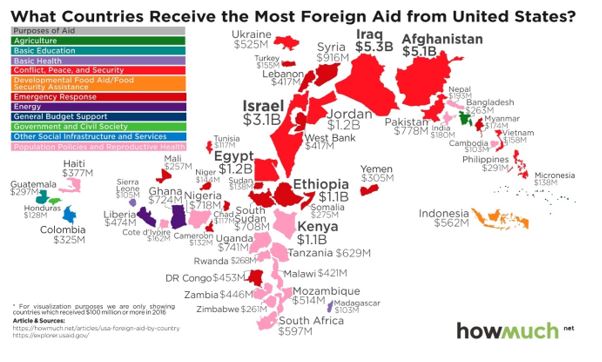
How much net compiled data from the United States Agency for International Development (USAID) for 2016, and keeps track of how much money U.S. taxpayers send overseas. The red countries on the map above is where the U.S. spends billions of dollars each year. Foreign aid also tends to follow U.S. troop deployments. The U.S. spends more than $18.3 billion in conflict reduction in foreign countries.
The total budget for USAID in 2016 is approximately $40 billion. Another $10 billion is spent outside of the control of USAID.
Here are the top ten recipients of USAID funds for 2016:
- Iraq: $5,281,179,380 (for conflicts, peace and security)
- Afghanistan: $5,060,306,051 (for conflicts, peace and security)
- Israel: $3,113,310,210 (for conflicts, peace and security)
- Egypt: $1,239,291,240 (for conflicts, peace and security)
- Jordan: $1,214,093,785 (for conflicts, peace and security)
- Kenya: $1,143,552,649 (for population policies and reproductive health)
- Ethiopia: $1,111,152,703 (for emergencies)
- Syria: $916,426,147 (for emergencies)
- Pakistan: $777,504,870 (for conflicts, peace and security)
- Uganda: $741,326,448 (for population policies and reproductive health)
USAID: FROM ITS WEBSITE
According to the USAID website, “it is the mission of USAID to help USAID partners to end extreme poverty and promote resilient, democratic societies while advancing our security and prosperity.”[Certainly not America's prosperity,more like some fat cat,that already has plenty,such bs DC]
IN REALITY: Please notice that the truth of who benefits from USAID is stated in the opening line – “while advancing our security and prosperity” refers to U.S. corporate interests supported by the U.S. military and especially by the CIA that watches over U. S. international interests.
.
Help End Preventable Child Deaths: $2.8 billion for USAID Global Health Programs, which along with State Department Global Health Programs, contributes to global efforts to support three goals: ending preventable child and maternal deaths, creating an AIDS-free generation, and protecting communities from infectious diseases.
IN REALITY: The US already gives billion to the United Nations’ World Health Organization that supposedly accomplishes these same goals. USAID money goes to radical birth control programs that disseminate immunizations that are sometimes laced with drugs that sterilize the recipient. The dissemination of AIDS drugs is a pharmaceutical scam that enriches corporations that manipulate drug prices.
Towards Ending Hunger: $978 million for the Feed the Future initiative in support of food security and agriculture programs to reduce hunger, extreme poverty, and malnutrition. Feed the Future reached nearly seven million smallholder farmers with new technologies.
IN REALITY: This is carte blanche for Monsanto and Bill Gate’s “Green Program” being spread throughout Africa and Asia to take control of all food production in third world countries. Also note that 1/3 of the money was given to theoretical “climate change” channels of money that have swallowed hundreds of billions of dollars and gain no appreciable “help” to anyone.
Promote More Democratic Societies and Institutions: $2.4 billion for democracy, human rights, and governance programs with specific increases in Central America, Asia, and Africa to ensure that our development investments are sustainable and transparent.
IN REALITY: Used corporate espionage, the CIA, and NGO’s to create “regime change” and spread chaos throughout the area, except for US businesses that receive the USAID funds.[Cory Morningstar has some really good Papers on how these corporations are doing this,I have her tagged at by blog,put she just started a new set, so here is the link to Part 1 of that new set,and this set is concentrating on Central America,bookmark her site DC]
Improve Prosperity and Economic Growth in Central America: Nearly $500 million to El Salvador, Guatemala, and Honduras to advance economic prosperity through reducing poverty, improving education and workforce development, and strengthening resilience in the region.
IN REALITY: Allowed Central American gangs to proliferate unabated throughout America and help them gain U.S. citizenship.
Connect and Empower Africa: $300 million to support key commitments and investments in Africa, including Power Africa to increase access to reliable, cleaner power for economic growth.
IN REALITY: This is insider corporate back-scratching where USAID pays an international corporation to buy and install its own “clean power” in a foreign nation under the auspices of climate change.
Enhance Science, Technology, Innovation, Evaluation and Learning, and Partnership: $190.5 million in funding for the Global Development Lab and the Policy, Planning, and Learning (PPL) Bureau.
IN REALITY: This is a fund that is simply self-enrichment for USAID itself under the auspices of helping more people.
Rebalance the Asia-Pacific Region: $687.5 million to support the expansion of efforts to strengthen governance and democratic processes, foster engagement with civil society, and promote rule of law and respect of human rights in the Asia-Pacific region.
IN REALITY: Covert funding for CIA led “democracy” movements that are a cover for protecting US corporate interests overseas.
Most Vulnerable Populations: $3.1 billion in USAID-managed humanitarian assistance is provided principally for emergency food supplies and the underlying causes of food insecurity, assistance to internally displaced persons, and victims of conflict and natural disaster.
IN REALITY: Remember that these funds do not go to the “people who are vulnerable” but instead go to organizations like Crown Agents USA Inc. and other supposedly “humanitarian” organizations that skim off the top and leave the rest for victims.
Food Aid Reform: Spends $350 million, for cash-based food assistance for emergencies.
IN REALITY: This small amount cannot touch the true needs of people starving throughout the world and we watch millions die of starvation while USAID spends billions on useless projects and only $350 million for the starving populations of the third world.
Support Agency Operations: $1.4 billion in USAID operating expenses to sustain ongoing operations, make significant improvements in procurement, local capacity building, innovation, and accountability.
IN REALITY: This is a ridiculous cost for running an agency that simply “gives money away” and barely keeps track of it.
.
USAID IS NOT US AID
Just as President Trump has defunded numerous areas of the United Nations because they simply were not doing their job, so too, he should give consideration to defunding USAID and the OPIC and make sure the fake “humanitarian” aid groups like Crown Agents USA Inc. are never given another penny of relief funds for those in need. Just like the United Nations Refugee program or the World Health Organization, the USAID and the OPIC should be defunded. Then, they should have their assets frozen by the U. S. Treasury while being audited and their assets seized.
The USAID and the OPIC are only considered legal because they have become institutionalized crime and the career bureaucrats in the Senior Executive Service keep the status quo maintained while no questions about these crimes are ever shared with anyone outside of the insider groups. These groups have personally benefited from the standard streams of money that have kept the usual recipients fat and happy.
Perhaps Ivanka Trump will be able to show her dad the corruption once she is on the inside of OPIC:
IVANKA TRUMP JOINS SENIOR EXECUTIVE SERVICE-RUN OPIC INITIATIVE
The time has come to stop paying foreign aid that does not fully reach the people need it. U. S. corporations should not be funded through this type of insider siphoning-off of foreign aid. U. S. corporations should not be supported by the U. S. military in foreign countries, especially if the corporation is there to fleece the third world country of its resources.
The C. I. A. should not be involved in protecting and benefiting U. S. or any corporations. This type of economic world domination by corporations under the guise of helping other nations must end.
THE TIME HAS COME TO ACKNOWLEDGE THAT U. S. FOREIGN AID IS NOT AID TO FOREIGN NATIONS BUT IS A SIMPLE SELF-ENRICHMENT PROGRAM FOR U. S. AND INTERNATIONAL CORPORATIONS FLYING UNDER A FALSE FLAG.
.
See also


No comments:
Post a Comment